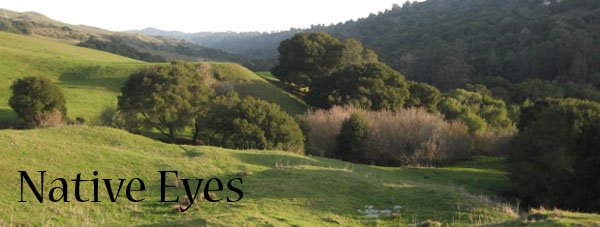
We arrived at Gazos Beach and found a completely different, and much smaller, pattern in the sand. The mice and other small beach denizens were out in force. But was this a mouse?

And here is a lovely bipedal hopper, with a distinct tail drag down the middle. The trail was longer than I can show with photos, too. The space between each set of two tracks was about one-half to five inches.

We spent most of the morning with our noses about a foot away from the sand.

For the afternoon, we had to get up and stretch. We walked inland, up an old dirt road, following coyote trails. We came to a spot where the texture of the road was nothing but coyote prints atop more coyote prints, but the confluence of canid trails soon dispersed again. We scouted around for more evidence of the main coyote highway, and instead found a stunningly glassy little irrigation pond just uphill.

Next to the pond, a dismembered and well-gnawed deer carcass. We wondered if it had been killed by a mountain lion or by coyotes, or was it a roadkill? And what had fed on it?

Look at that slice through the spinal column, and the chomp marks on the rib! Cats will shear the ribcage open wide to get at the choicest internal organs. But is this a neat shear or rough gnawing?

We also found this little pile of poo. It was old, and didn't hold much scent. When I poked it with a stick, it seemed fluffy, not dense, and the hair was twisted around and ropy in places. Some folks say that felid poo is dense and shaped more like tootsie rolls, while canid poo is loose and ropy and comes to a sharp point at the ends.

The two hind legs were strewn around away from the carcass and most of the meat -- and some skin and fur -- eaten. The head, neck and forequarters were still unaccounted for. The bones, too, were chewed. Would a lone mountain lion dismember a carcass? Would a pack of coyotes? Could smaller scavengers manage to drag the quarters so far?

But on closer inspection, this right hind leg shows that the femur was cleanly snapped in two, rather than crushed. That might imply a very strong blunt force, rather than the crushing bite of a predator.

We found a pretty big, goopy looking pile of short plant fibers near the pond. Next to the pile, we found stringy, membranous scraps. We thought that these were the remains of the gut contents, stomach and intestines. Popular wisdom says that cats generally eviscerate their prey and then drag the carcass away from the gut pile.

When we were done examining the carcass, we concluded that the deer had been hit by a car on the road. With at least one leg broken, it either died or was killed by coyotes and then brought up to the pond for the pack to consume. What do you think?






No comments:
Post a Comment